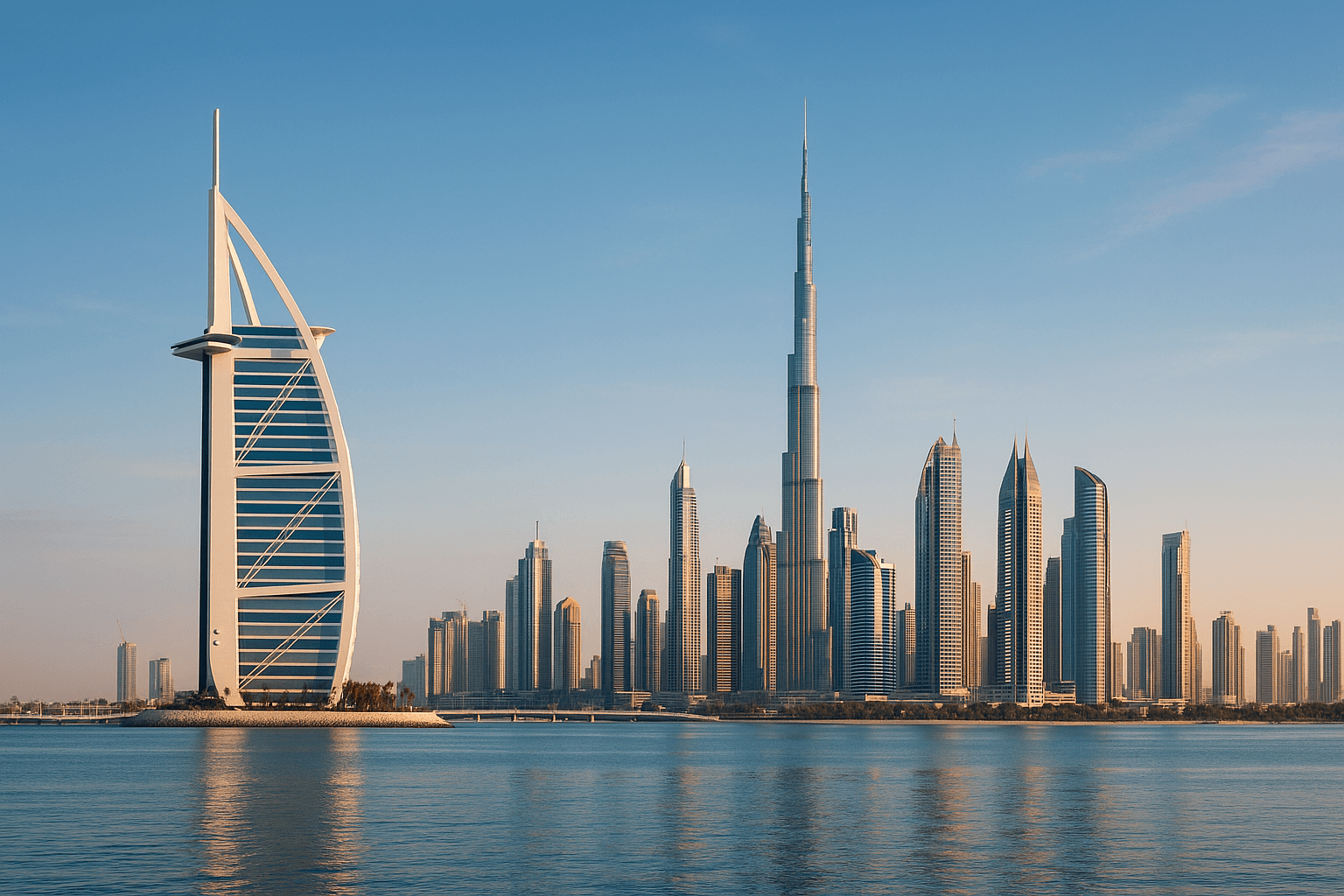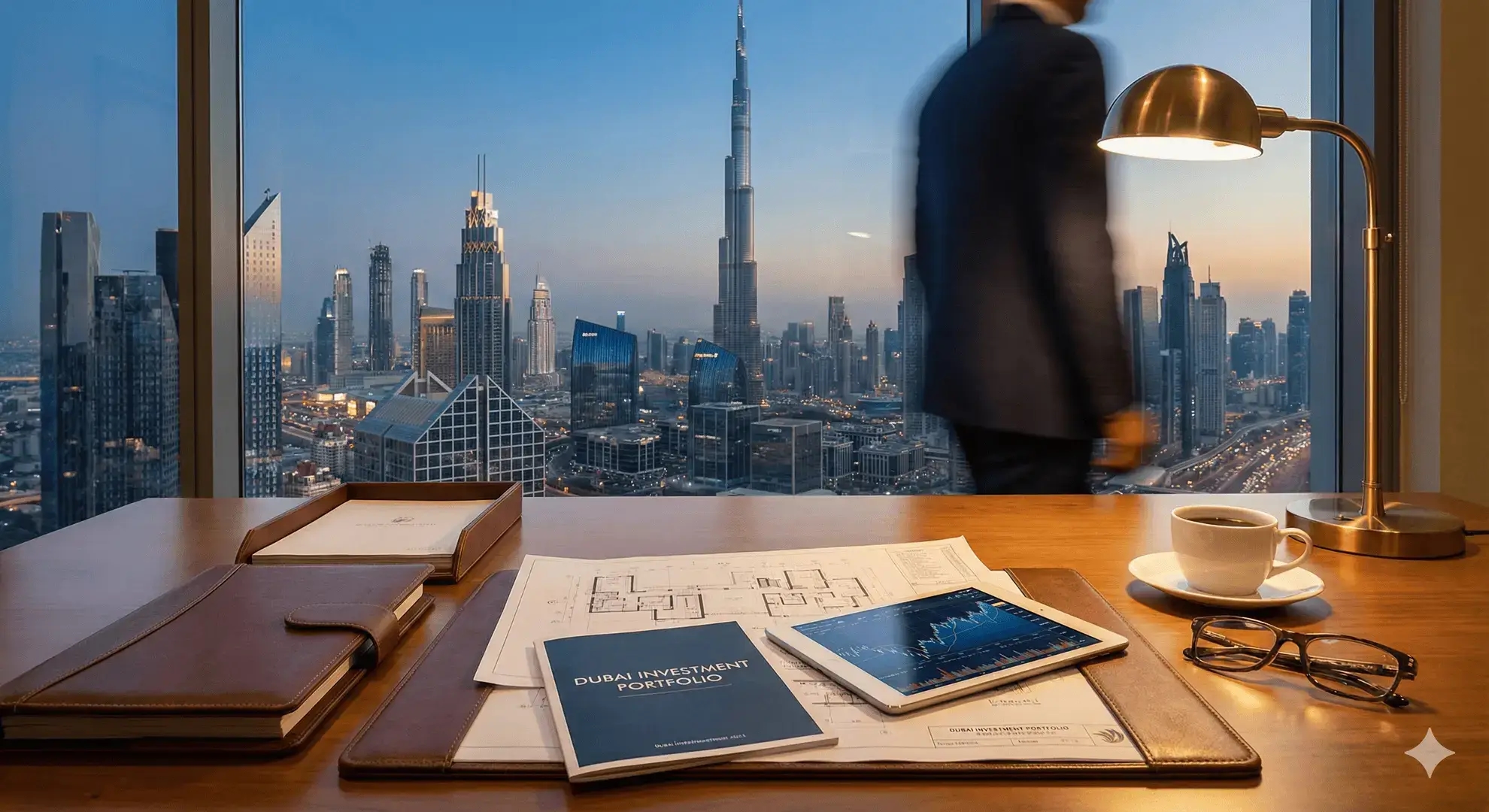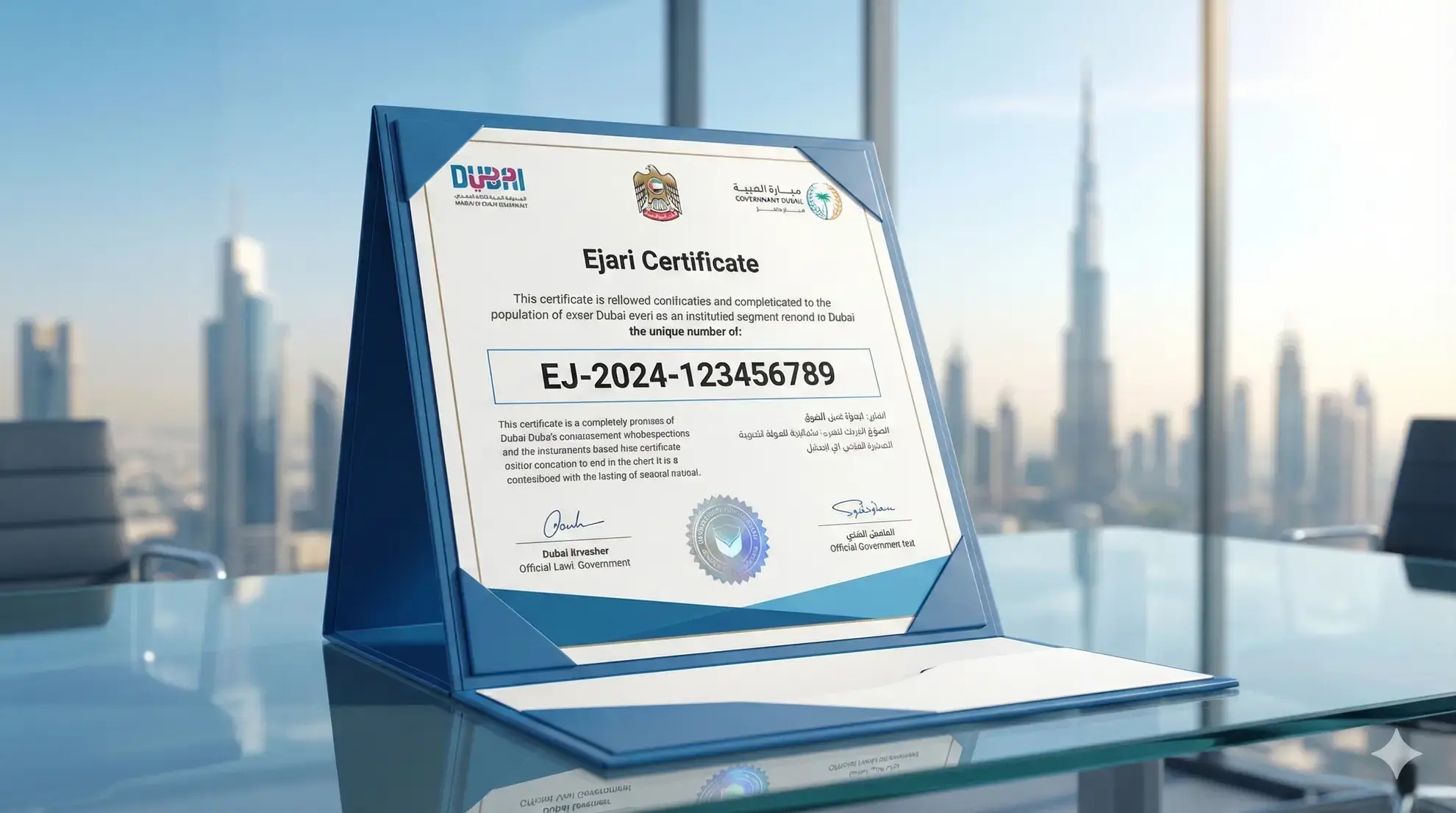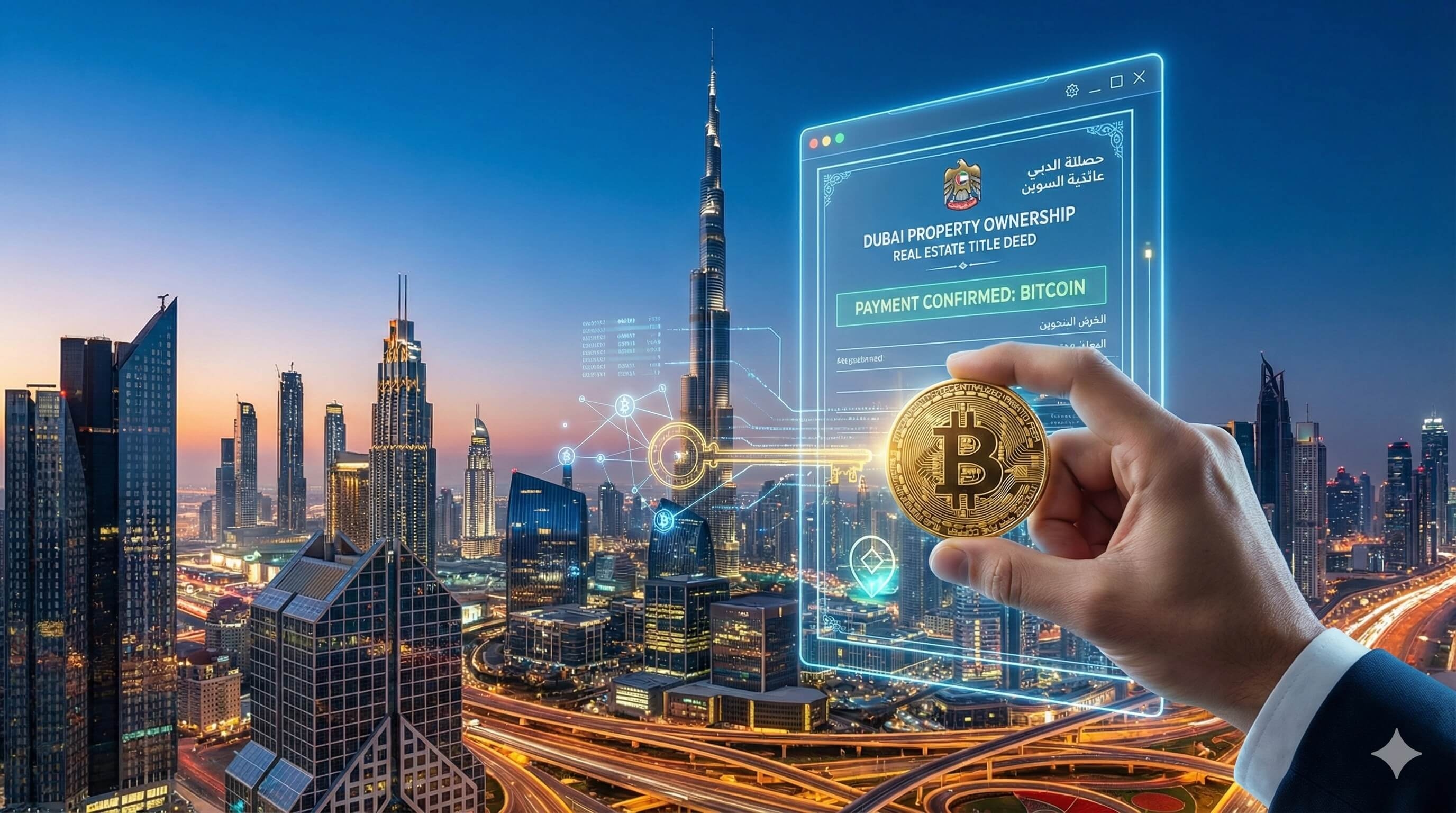UAE Megaprojects 2025

The United Arab Emirates is experiencing a new phase of development that will shape the country's future for decades to come. At the forefront are megaprojects—large-scale government and private sector initiatives encompassing innovative cities, infrastructure complexes, cultural centres, and technology hubs.
Megaprojects are more than just large construction sites. They are strategic initiatives that shape entire regions, create new centres of economic growth, and set trends for global development. In 2025, the UAE is launching and completing several such initiatives, each unique in concept, investment potential, and significance for international investors.
Evolution of UAE Megaprojects
Over the past decade, the profile of megaprojects in the UAE has transformed significantly. Whilst the early 2010s focused on record-breaking towers, large shopping and entertainment complexes, and landmark tourist attractions, the mid-to-late 2010s and early 2020s increasingly emphasised sustainability, digitalisation, and smart cities. The peak interest in large-scale architectural icons has shifted towards complex, multi-layered initiatives that combine residential, commercial, technological, and environmental components.
Traditional large-scale UAE construction projects—skyscrapers, major shopping centres, and entertainment parks—remain important for the country's image and tourist flow, as demonstrated by Expo 2020's impact on the economy and investment attraction. However, their role is increasingly viewed as part of a broader urban development strategy. The economic impact of such events and facilities has been confirmed through analyses showing significant contributions to GDP, job creation, and foreign investment inflows.
Simultaneously, next-generation projects have emerged—smart cities and green clusters. Masdar City in Abu Dhabi is one of the earliest and most notable examples. This initiative to create an energy-efficient, eco-friendly, and technologically advanced city launched in 2006, but has gained practical traction over the past decade with real business incubators, science and technology hubs, and pilot autonomous solutions (drones, autonomous logistics, digital infrastructure). This illustrates the transition from conceptual eco-projects to their phased commercialisation and scaling.
The government's strategic agenda is the key driver of this shift. The long-term vision of UAE Centennial/Vision 2071 sets targets for economic diversification, innovation, sustainable development, and human capital preparation spanning decades. Within this strategy, megaprojects are increasingly designed not just as construction sites, but as platforms for technologies (AI, IoT, clean energy), education, and healthcare—essentially as ecosystems for long-term growth.
As a result, over the past 10 years, the UAE has evolved from "showcase" architectural ambitions to well-considered investment and technology initiatives. Modern megaprojects in Dubai and other emirates focus on integrating smart infrastructure, sustainable energy solutions, and the digital economy, making them attractive to strategic and institutional investors whilst strengthening the UAE's role as a regional innovation centre.
Top 9 UAE Megaprojects Launching in 2025
For regional development, 2025 marks a pivotal year. The United Arab Emirates is bringing several ambitious initiatives to the finishing line that should strengthen its status as a global centre for innovation, tourism, and investment. These include cultural clusters, modern infrastructure hubs, smart urban spaces, and new architectural landmarks. These UAE megaprojects of 2025 demonstrate how the country combines large-scale construction with sustainable development and long-term growth strategy.
Guggenheim Abu Dhabi Museum — Saadiyat, Abu Dhabi
Construction continues on the Guggenheim Abu Dhabi art museum in the cultural district of Saadiyat Island, which will become the largest branch of the famous network. Designed by architect Frank Gehry, the concept combines extensive exhibition spaces with educational and research facilities.
The construction contract was valued at approximately $1 billion, though various budget estimates appear in public sources. The Solomon R. Guggenheim Foundation is the initiator with support from Abu Dhabi authorities, whilst the contractor is a joint venture between BESIX (Six Construct) and Trojan.
The architecture features Gehry's signature style and sustainable climate solutions inspired by the region's traditional wind towers. According to Abu Dhabi's Department of Culture and Tourism, the project should be completed in 2025, though recent reports indicate delays, and current information suggests it's entering the final stage. Upon completion, it will become the largest of the Solomon R. Guggenheim museums.
Zayed National Museum — Saadiyat, Abu Dhabi
Also on Saadiyat Island, the Sheikh Zayed National Museum is taking shape as the main symbol of the United Arab Emirates' cultural memory and history. The museum will chronicle 300,000 years of regional history, with particular emphasis on the legacy of the nation's founder, Sheikh Zayed bin Sultan Al Nahyan.
The architectural concept by Foster + Partners includes five impressive falcon wings that provide natural ventilation and climate regulation.
The implementation cost is not disclosed in public sources, but the Abu Dhabi government is the initiator and main client. The key contractor is again the Trojan and SixConstruct consortium. The project's uniqueness lies in combining outstanding architecture with a profound historical narrative. According to the museum's official website, the opening is scheduled for December 2025.
teamLab Phenomena Abu Dhabi — Saadiyat, Abu Dhabi
Another component of Saadiyat's cultural cluster is teamLab Phenomena Abu Dhabi, which opened in April 2025. This is a permanent institution by Japanese art collective teamLab, created with support from DCT Abu Dhabi and Miral.
A purpose-built facility spanning approximately 17,000 square metres houses interactive digital installations that change over time and create a sense of a "living" environment.
The project budget has not been disclosed, but its uniqueness lies in its scale and technical sophistication—it's one of the world's largest immersive art venues, combining light, sound, water, and cutting-edge technology. The facility is already receiving visitors and strengthening Abu Dhabi's status as the region's cultural capital.
Masdar City Square — Masdar City, Abu Dhabi
As part of Masdar eco-city's development, the new business cluster Masdar City Square is being completed by 2025. This project combines office and commercial buildings constructed to strict energy efficiency and sustainability standards.
The developer is Masdar—Abu Dhabi Future Energy Company, known for its investments in renewable energy and sustainable development. The total project cost has not been publicly disclosed, but Masdar City Square is positioned as an important element of the company's long-term strategy.
The complex's uniqueness lies in its role as a business hub and research platform for clean technologies. Masdar City has long served as an experimental laboratory for implementing electric transport and smart energy grids, and the new cluster will become a key link in this development.
Jumeirah Marsa Al Arab — Jumeirah, Dubai
In Dubai, next to the iconic Burj Al Arab, the grand coastal project Marsa Al Arab is being realised, including the new super-luxury hotel Jumeirah Marsa Al Arab. The complex concept includes two man-made islands and coastal areas with beaches, residences, theatres, and family recreation zones.
The entire project's cost was initially estimated at approximately $1.7 billion. Dubai Holding and Meraas are the developers, whilst Jumeirah Group operates the hotel component. The hotel's uniqueness lies in combining ultra-luxury design with a yacht marina and modern resort solutions.
Jumeirah Marsa Al Arab officially opened to guests in March 2025, whilst other elements of the master plan continue to develop.
Dubai GigaFarm (Food Tech Valley) — Industrial Zone, Dubai
In Dubai's Food Tech Valley agro-industrial zone, Dubai GigaFarm is being realised—the world's largest vertical farm, created in partnership between ReFarm Global and British company Intelligent Growth Solutions. It's a large-scale complex spanning approximately 900,000 square feet, designed to produce over three million kilogrammes of fresh produce annually.
Investment details are not disclosed. It's a key part of the emirate's food strategy aimed at reducing import dependency. The farm's uniqueness lies in its closed-loop ecosystem and use of waste-to-value technologies, where waste is converted into resources.
The first production phase began in 2025, making GigaFarm an important element in ensuring the region's food security.
Dubai Reefs — Coastline, Dubai
One of Dubai's most ambitious new projects for 2025 in sustainable development is Dubai Reefs—an initiative by URB studio aimed at restoring marine ecosystems and creating floating communities off the emirate's coast. The project involves installing billions of coral reefs, planting mangroves, and developing eco-tourism based on floating platforms powered by renewable energy.
The implementation cost is not specified in public sources, but involves multi-billion-dollar investments. Dubai Reefs' uniqueness lies in combining urbanism with oceanology: it will become not only a residential and tourist space but also a scientific laboratory for ocean research.
Initial pilot work on installing reef elements began in 2024–2025. During summer 2025, local authorities and initiatives published materials and videos showing progress: the project is actively advancing towards realisation.
Heart of Sharjah — Sharjah
Heart of Sharjah is a large-scale heritage preservation project, restoring old Sharjah city. The main idea is to restore the historical infrastructure, streets, markets, and buildings as they were in the mid-20th century, whilst meeting modern preservation, architectural, and comfort standards.
The project covers approximately 35,000 m² and is considered the largest heritage site in the Arabian Gulf. The initiator is Sharjah Investment & Development Authority (Shurooq) together with Sharjah's heritage department and museums.
The project's uniqueness is that it's not simply restoring individual monuments, but large-scale restoration of an entire quarter, emphasising cultural and tourist potential and possibly inclusion on the UNESCO World Heritage list. Completion of the project's fifth phase is scheduled for 2025.
Stargate UAE — AI Data Centre, Abu Dhabi
Stargate UAE is one of the key technology megaprojects aimed at strengthening AI infrastructure in Abu Dhabi. It's a data centre complex supported by partners including G42, OpenAI, Nvidia, and others, designed to span approximately 10 square miles, with initial capacity of 200 megawatts, and plans to scale to 5 gigawatts.
The initiator is G42 alongside federal and emirate institutions. Stargate's uniqueness lies in its scale, technological focus, and ambitions to become one of the largest AI hubs outside the United States.
Whilst full operation is expected in 2026, the first phase launch and preparatory work are progressing actively, making it an important player amongst 2025–2026 projects.
How Megaprojects Impact the Property Market
Megaprojects in the United Arab Emirates play a role beyond architectural symbols or infrastructure initiatives—they directly transform the property market. Each new major project, whether a cultural centre, technology cluster, or tourist hub, creates a powerful multiplier effect. This is primarily related to forming new urban environments where demand grows for housing, commercial space, and supporting infrastructure.
One key factor is rising property prices in adjacent areas. Past experience shows that launching or even announcing large-scale projects increases investor and end-buyer interest. For example, areas near Dubai Creek Harbour or Expo City have shown notable residential price increases in recent years precisely due to their connection with major investment initiatives. Such projects are viewed as guaranteed sources of capital growth, which intensifies competition and encourages developers to offer new residential and commercial complexes.
An equally important consequence of megaprojects is the formation of new neighbourhoods and urban clusters. Building major cultural facilities, museum complexes, or smart cities creates entire ecosystems around them: schools, hospitals, shopping centres, and business incubators. This generates long-term interest in property in these zones and makes them attractive not only for short-term speculation but also for permanent residence or business operations.
Special attention should be paid to foreign investor activity. Megaprojects supported by the government and integrated into the UAE Vision 2071 strategy are perceived as guarantees of long-term stability. For overseas buyers, this signals that investments will be protected and will grow alongside the country's economy. Consequently, the share of transactions involving foreign capital increases, further stimulating the market.
Moreover, launching new megaprojects opens prospects for commercial property. Modern business districts and innovation centres require office spaces, hotels, and retail areas. Thus, not only the residential segment grows, but also retail and hospitality segments actively develop in connection with tourist and cultural clusters.
The impact of megaprojects on the market can be summarised in several key areas:
Rising prices for residential and commercial property in areas adjacent to new projects
Formation of new urban clusters with residential and social infrastructure
Attraction of foreign investors for whom megaprojects indicate stability and potential
Expansion of the commercial property segment—from offices to shopping centres and hotels
Increased asset liquidity, accelerating transactions and increasing profitability for both developers and buyers
In summary, UAE megaprojects catalyse economic and urban development. Their implementation creates new growth points for the property market, maintains global investor interest, and strengthens the country's position as one of the world's leading investment destinations.
Investment Opportunities
Megaprojects in the United Arab Emirates open broad prospects for private and institutional investors. Each new cultural centre, innovation cluster, or residential district forms a unique ecosystem where investments are possible at different development stages. Investments in UAE megaprojects are viewed as one of the most stable instruments for preserving and growing capital amid global competition for reliable assets.
Investment formats in megaprojects:
Property is the most popular direction. Investments in residential complexes near key facilities—whether cultural centres in Abu Dhabi or new business districts in Dubai—ensure stable value growth and high rental yields. Entry into this segment typically requires from $150,000–200,000 USD, corresponding to entry-level apartment costs in prestigious areas.
Commercial spaces are an equally interesting direction. New megaprojects create office spaces, hotels, retail zones, and recreational centres. The minimum entry threshold is higher—from $500,000 USD—but the yield potential is notably higher, especially with long-term ownership.
Participation in collective investment funds and development projects deserves special attention. Real Estate Investment Trusts (REITs) and joint equity participation schemes are available to foreign investors. This reduces risks and allows market entry with smaller amounts—from $10,000–20,000 USD.
The investment procedure in the Emirates is quite transparent. Foreign investors need to provide passports, proof of income, and undergo legal and financial verification. Opening a bank account in the UAE and obtaining an investor identification number is also required. All transactions involve registered estate agents or legal consultants, ensuring high-level rights protection.
The greatest potential for 2025 lies in sectors such as smart cities, environmentally sustainable residential areas, data centres, and tourist infrastructure. These directions sit at the intersection of technology and property, making them attractive for long-term investments.
If you're considering expanding your portfolio through the UAE's dynamic market, now is the most suitable time. Learn more about current offerings and receive personalised consultation by visiting the investments page.
Key Advantages for International Investors
Interest in UAE megaprojects continues growing amongst foreign investors, which is unsurprising: the country consistently builds its image as a global centre for capital, technology, and business. Participation in such projects provides access to a rapidly growing property market and entire economic sectors supported by the government and embedded in long-term strategic development programmes. For overseas investors, this means combining stability, high yields, and the opportunity to participate in transformational processes in the region.
Key advantages of investing in UAE megaprojects:
Political and economic stability: The UAE ranks amongst the most stable states in the Middle East, reducing investment risks and ensuring long-term investment predictability
Transparent legal framework: Recent years have seen laws simplifying foreign property ownership, including full ownership rights in designated zones
Favourable tax regime: The Emirates has no personal income tax, whilst businesses enjoy attractive conditions, including free economic zones
High market liquidity: Property near major megaprojects appreciates quickly and sells easily, minimising capital freeze risks
Economic diversification: The UAE actively invests in tourism, technology, logistics, and renewable energy, reducing oil sector dependency and making the market more resilient
Developed infrastructure: Investments in residential and commercial properties are accompanied by transport hubs, social facilities, and smart services that enhance quality of life and rental demand
Attractiveness to expatriates: The Emirates consistently rank amongst top countries for quality of life, guaranteeing a steady flow of specialists and entrepreneurs creating demand for housing and office space
Government guarantees and support: Major megaprojects are directly linked to national strategies such as UAE Vision 2071, minimising the likelihood of suspension or freezing
Collectively, these factors make participation in United Arab Emirates megaprojects particularly attractive for international investors. This isn't simply investing in property or infrastructure, but a strategic move towards global capital, technology, and sustainable development. Investors gain access to a market demonstrating stable growth and the ability to shape new global trends in architecture, urbanism, and business.
How Mayak Real Estate Can Help
Mayak Real Estate has over 15 years' experience working with Dubai property and the international market. During this time, the agency has built a portfolio of 150+ projects serving different client types—investors, end buyers, or first-time property purchasers. Consequently, Mayak's strength lies in deep market understanding and the ability to assess real opportunities.
One of the company's key advantages is in-depth sector analysis. Mayak Real Estate specialists conduct thorough assessments of areas, projects, demographic and infrastructure environments, and price growth forecasts. This allows clients to receive not just lists of offerings, but carefully selected properties matching stated goals: rental or resale income, long-term capital growth.
Mayak Real Estate provides access to exclusive offerings—projects and properties not always present in public catalogues. This is especially important for international investors seeking premium properties or special opportunities with growth prospects.
Complete legal and administrative transaction support is another strength. Mayak Real Estate assists at all stages: document verification, negotiations, contract preparation, bank account opening, transfer arrangements, and regulatory compliance monitoring. Post-sale service is also provided: key handover, utility connections, residence visa assistance, etc.
Mayak Real Estate offers property management for those wishing to rent properties short or long term. The full service spectrum covers tenant selection, payment monitoring, maintenance, repair management, etc. This is especially important when investors are outside the Emirates and want to minimise risks.
Another significant aspect is reputation and reliability in the local market. Mayak Real Estate maintains a solid position, excellent client ratings, positive reviews, high transaction transparency, and a qualified team. The agency works with leading developers and possesses expertise in commercial and residential projects across various Dubai areas.
Conclusions
The era of megaprojects in the UAE marks a new development cycle where innovative technologies, ambitious urban planning, and large-scale government strategies create a unique investment climate. Projects launching in 2025 already set the tone for coming decades, influencing both Dubai and Abu Dhabi's architectural landscape and the global property and investment market.
For international investors, this is an opportunity to be amongst the first participants in this transformation, gain access to rapidly growing economic sectors, and leverage the advantages of sustained demand for housing, offices, and commercial space in strategically important locations.
To maximise such opportunities' potential, it's important not to act randomly but to rely on professional analysis and expertise. Contact Mayak Real Estate specialists for individual consultation on UAE investment projects to select the optimal direction and make investments as profitable and secure as possible.



